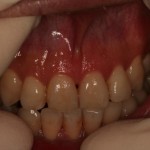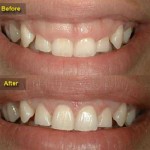REACTIVE & INFLAMMATORY WHITE LESIONS
LINEA ALBA (WHITE LINE)
Horizontal streak on the buccal mucosa at the level of the occlusal plane extending from the commissure to the posterior teeth
Common finding
Most likely associated with pressure, frictional irritation, or sucking trauma from the facial surfaces of the teeth
Present in about 13% of the population in one study.

